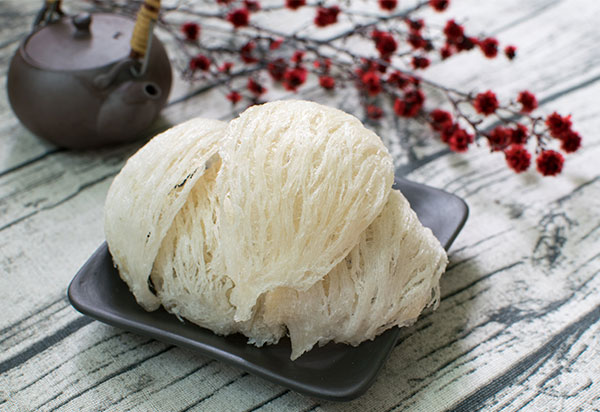China is currently the largest market of the global bird’s nest industry, they buy up to 90% of the global salanganes’ nests production, in which Vietnamese bird’s nests are highly appreciated by Chinese customers, especially Hoi An’s nests are very popular.
According to statistics, China accounts for 80% of the global market share of bird’s nests, the demand for consumption and import of bird’s nest products (salanganes’ nests) of the Chinese people is constantly increasing. The global production of bird’s nests is about 2,000 tons, of which 90% is exported to China, Indonesia alone exports up to 1,600 tons of bird’s nest to China.
Vietnamese Salanganes’Nest is highly appreciated by Chinese customers. “The Chinese market has no shortage of swiftlet, but currently there is no Vietnamese bird’s nests and now they really want to import Vietnam’s bird’s nests, so they coordinate very quickly and effectively with the representative of the Ministry of Agriculture and Rural Development to complete the procedures to be able to officially import bird’s nests from Vietnam”

Vietnam is one of the countries with a source of bird’s nests with outstanding natural conditions. The quality of Vietnam’s bird’s nest is highly appreciated. According to the Department of Livestock Production, each year Vietnam harvests about 120 tons of bird’s nest, worth 450 million USD
The reason why the Chinese love Vietnamese bird’s nests so much, although the supply from other places is not lacking, is thanks to the reputation of Vietnamese bird’s nests, in which, Salanganes’Nest from Cu Lao Cham – Hoi An and Khanh Hoa’s bird’s nests are brands has been confirmed.
The unique reputation and quality of Salanganes’Nest from Cu Lao Cham – Hoi An is due to the natural conditions of the geographical area. Cu Lao Cham is one of the very few islands in the country that still retains a relatively large vegetation cover, about 60-70%, and is home to many animal species.
In addition to the natural factors of the geographical area, the technique of exploitation and preliminary processing of bird’s nest is also a factor to ensure the quality of bird’s nest in Cu Lao Cham – Hoi An. The exploitation and preliminary processing of bird’s nests is done entirely by hand.
The exploitation is divided into two periods, from mid-April to early May (when the swifts have laid 2 eggs), and from mid-August to early September (when the chicks have left the nest). When conducting harvesting, harvesters must not let the nest and eggs be broken. Harvesting time is usually from 9am to 3pm within 4-5 consecutive days.
Meanwhile, according to experts, the bird’s nests in Khanh Hoa is a subspecies of an endemic swiftlet species, distributed mainly in the central and southern coastal provinces. In particular, Khanh Hoa is the place where the population of island swiftlets develops stably and is the largest in Vietnam.
Thanks to the geochemical origin, the rich chemical and mineral composition in the swiftlet caves, the Khanh Hoa bird’s nest has a particularly high nutritional value and the characteristic taste of the natural island’s nest.


 中文 (中国)
中文 (中国)